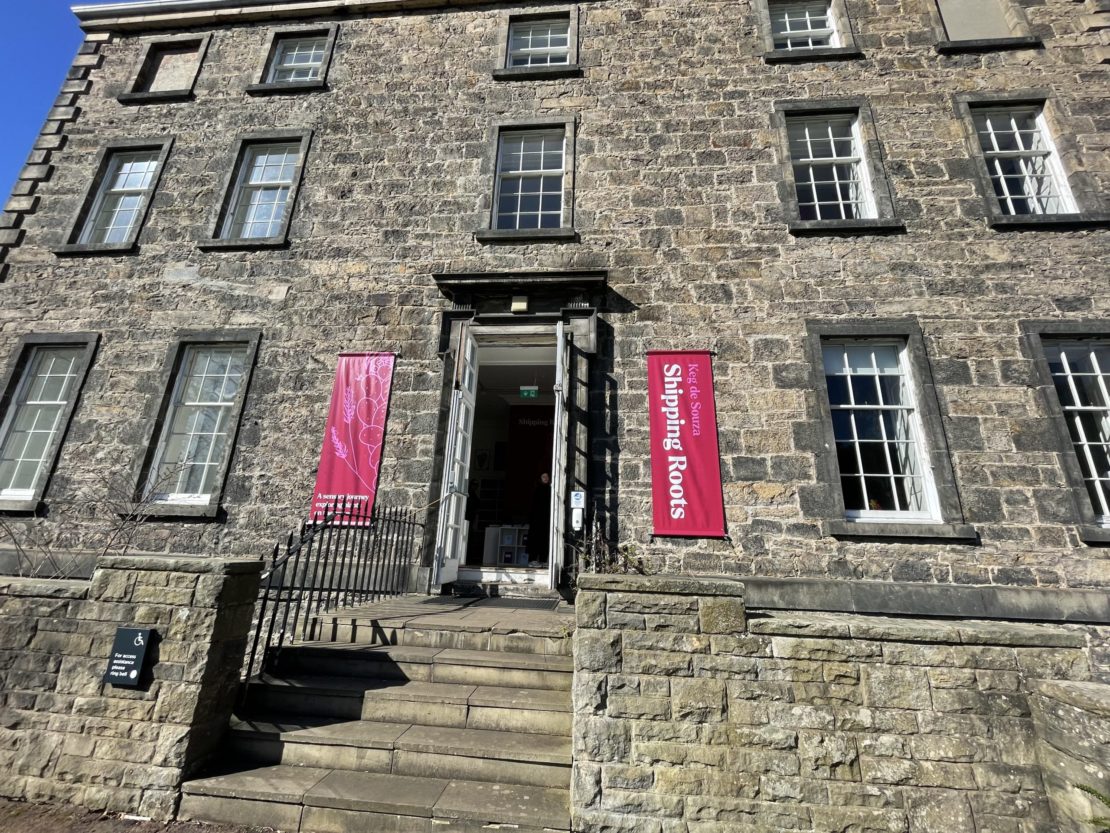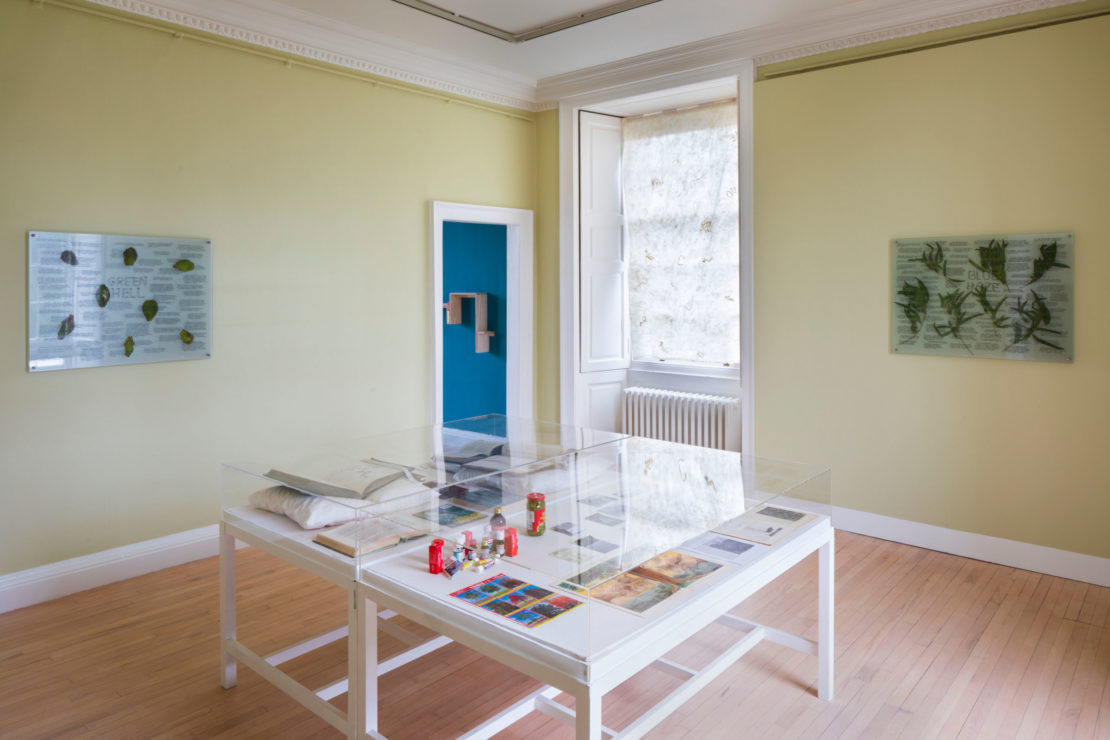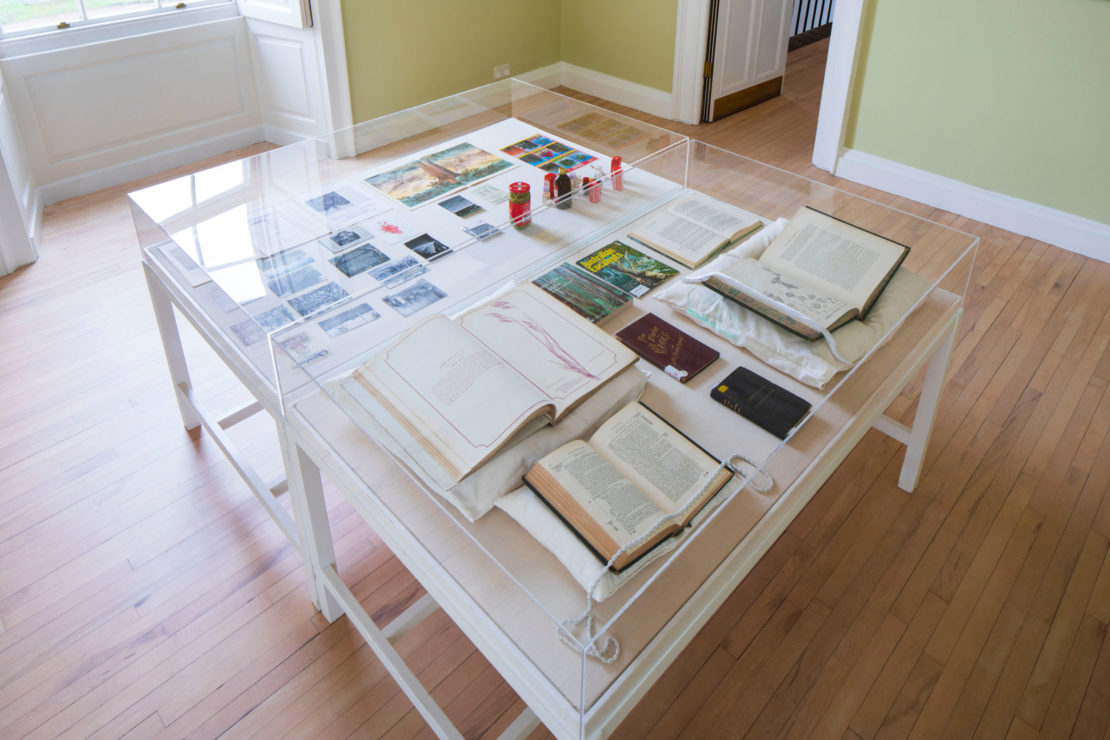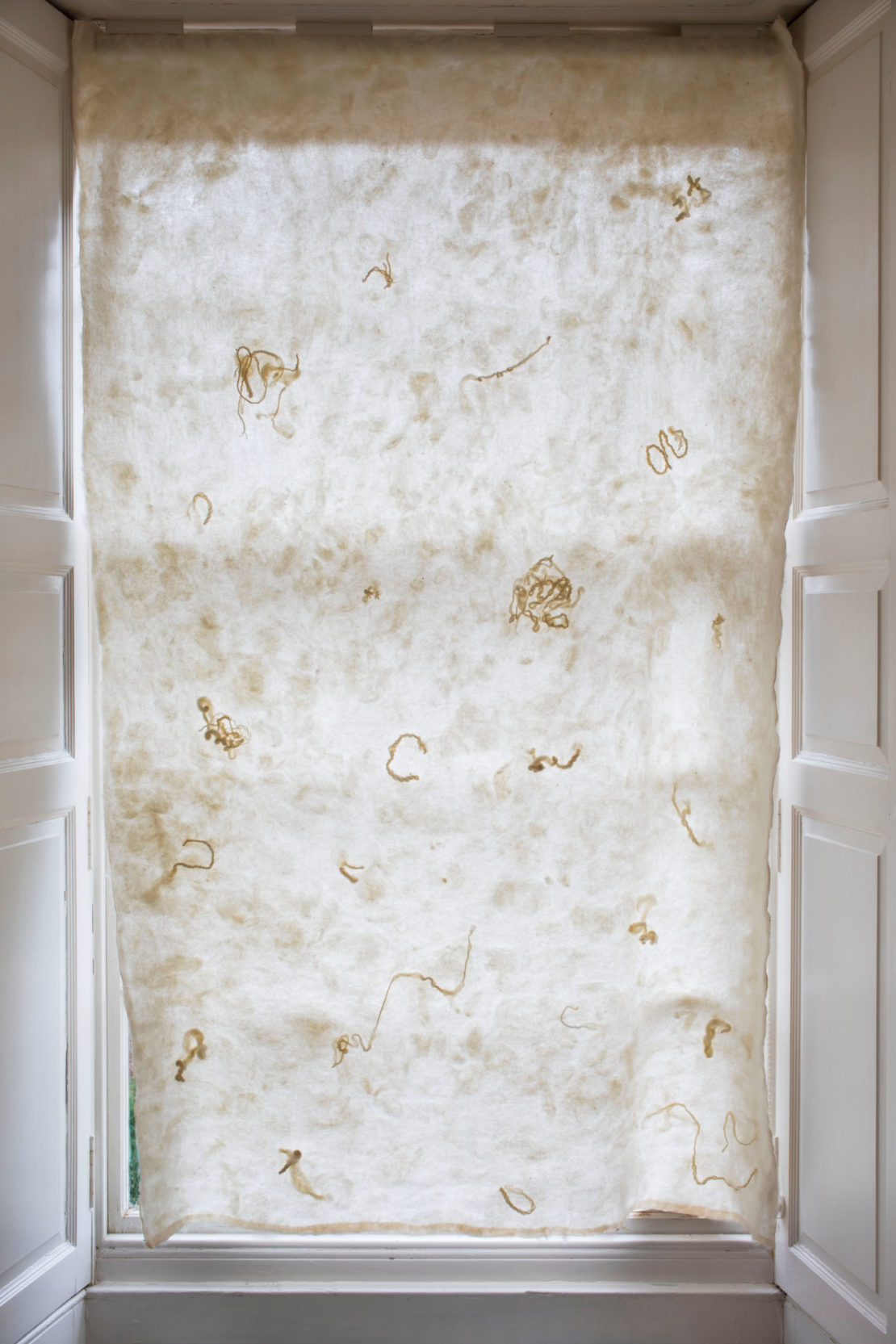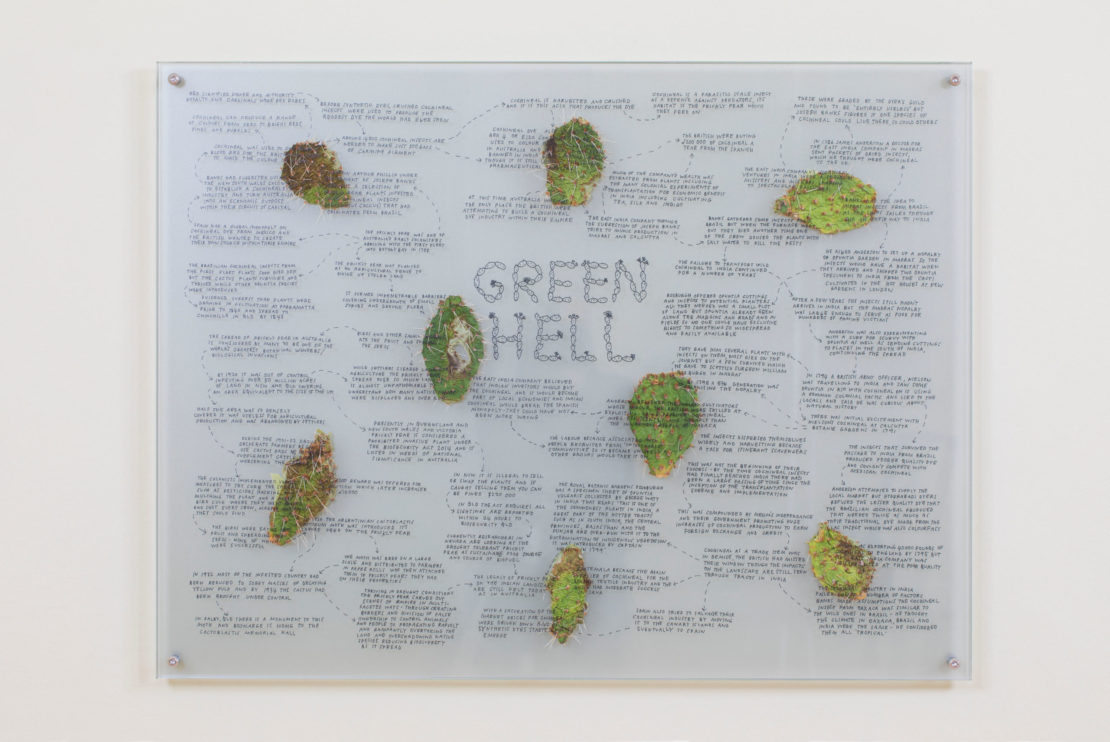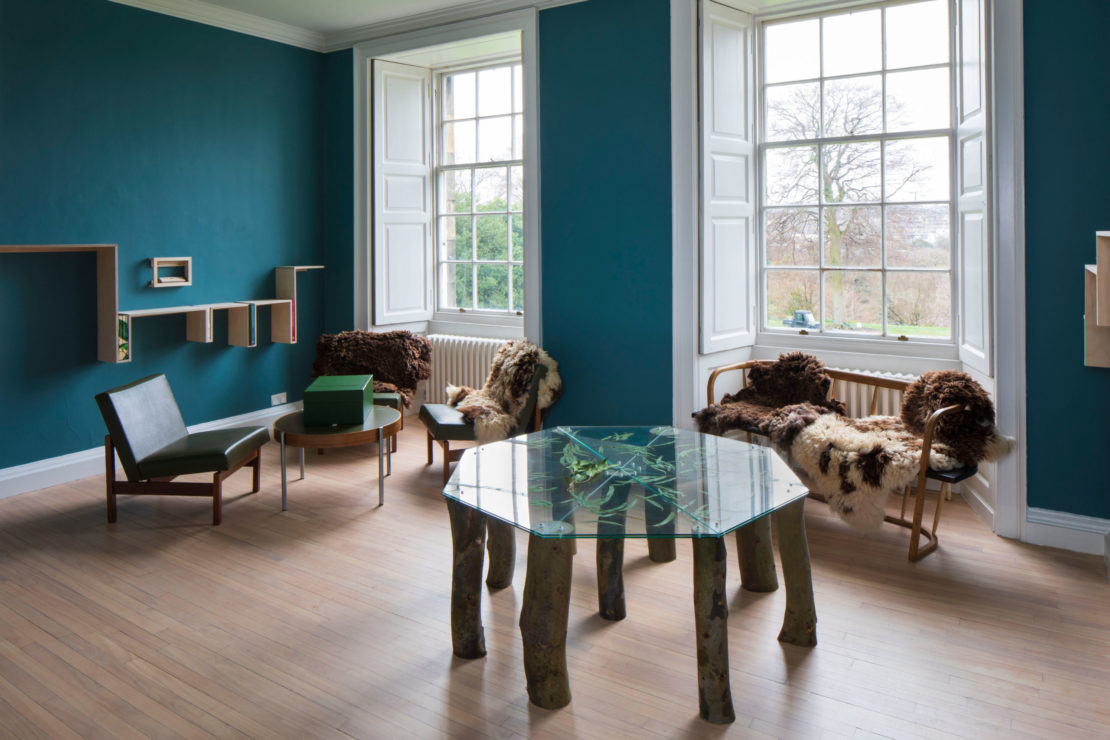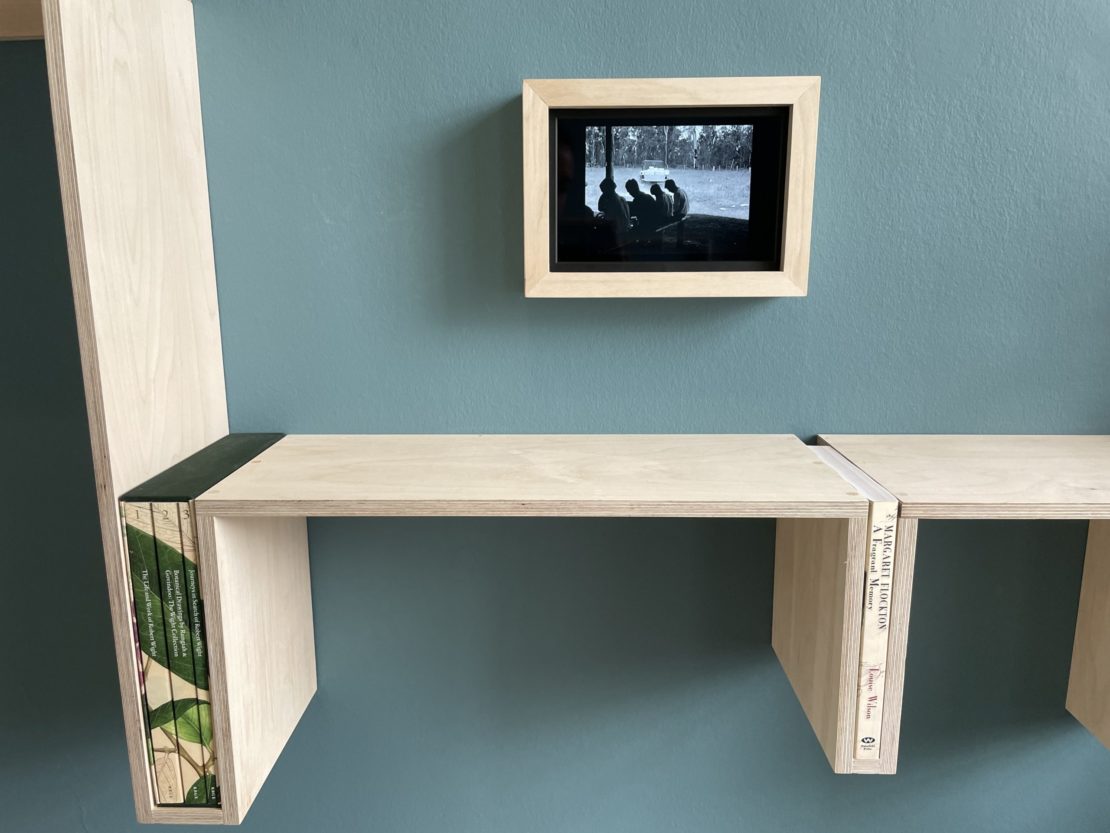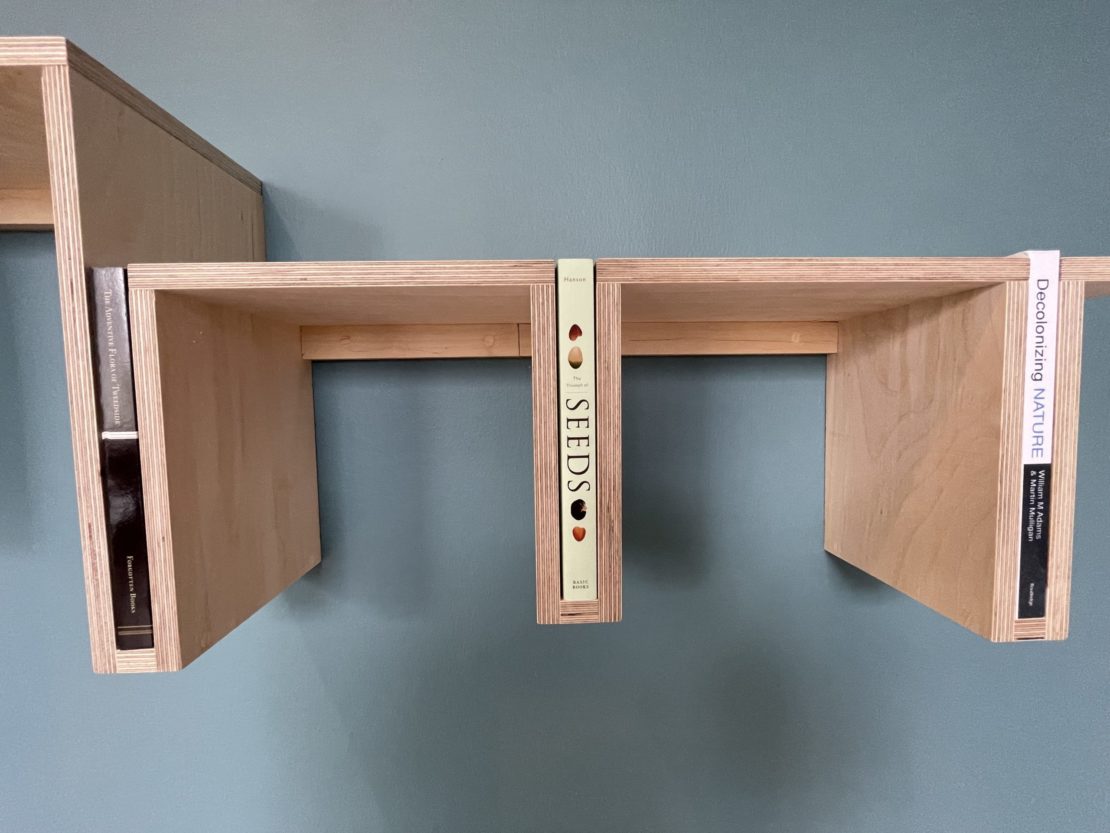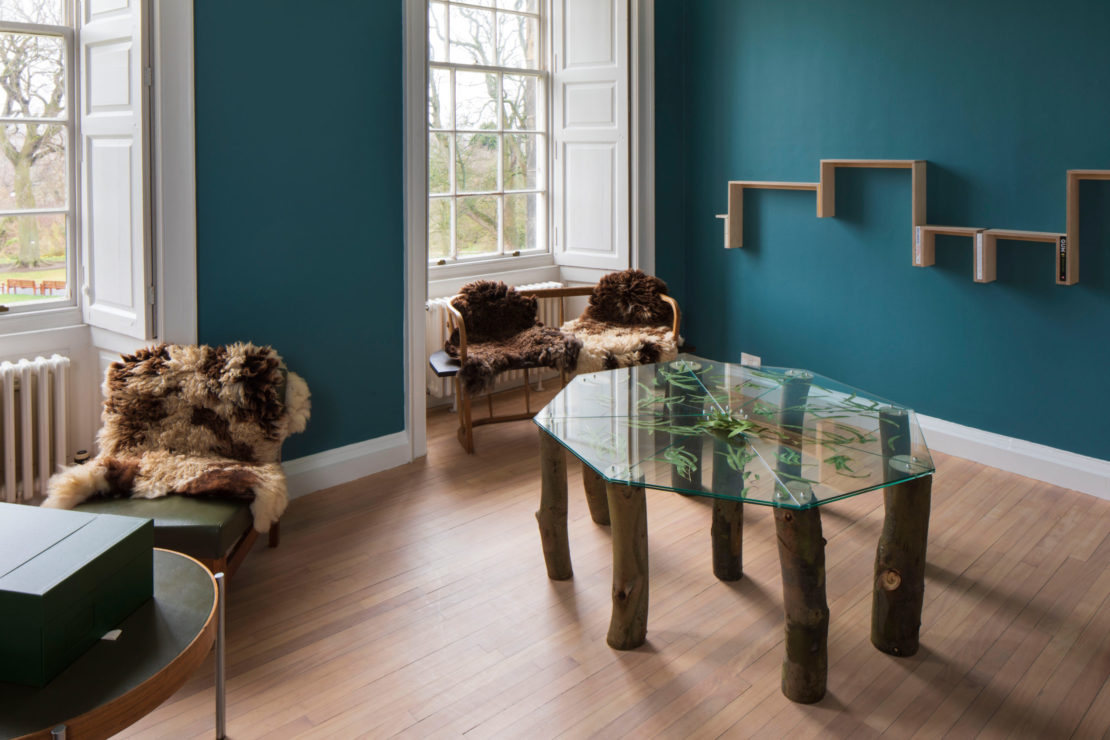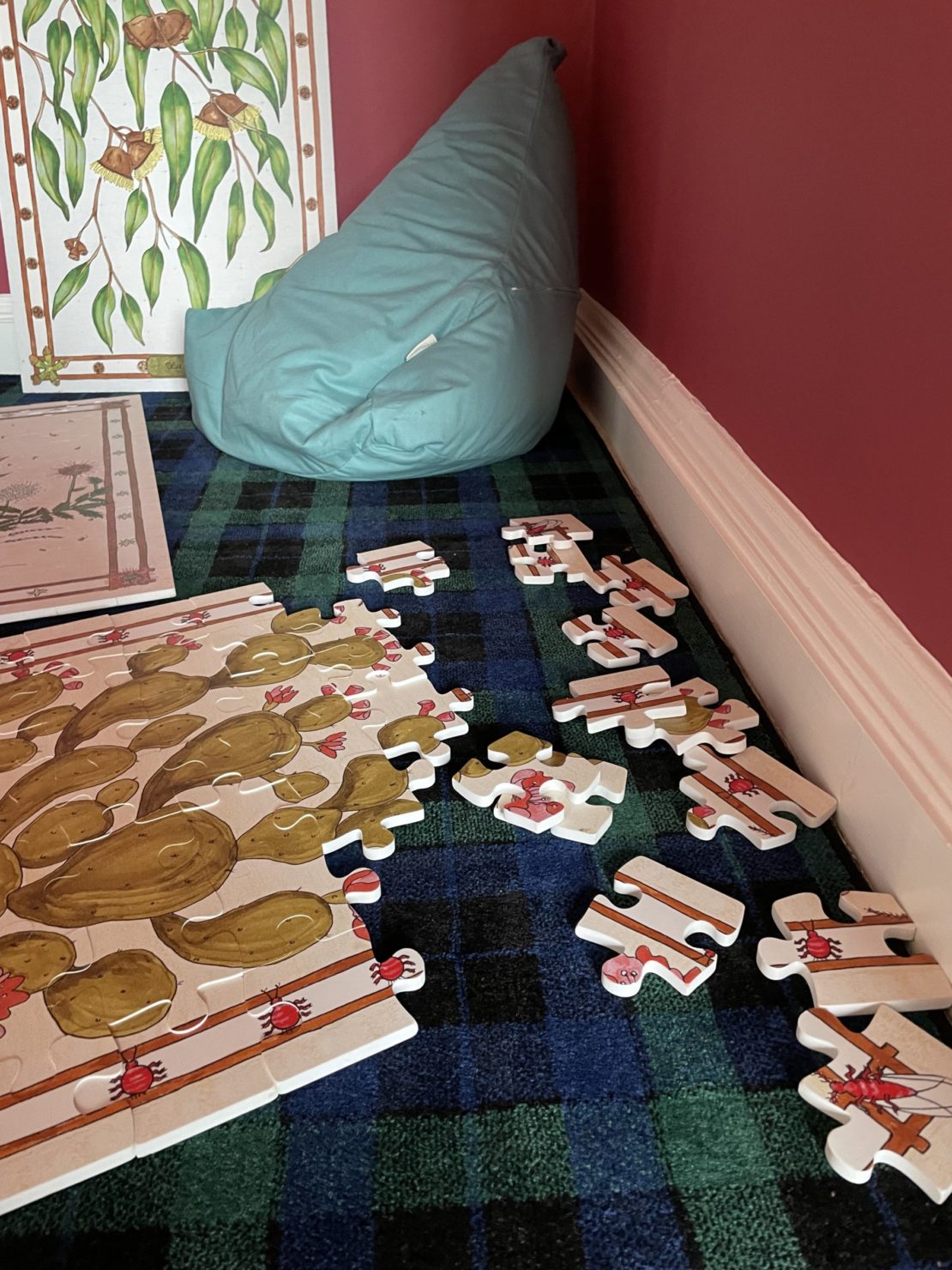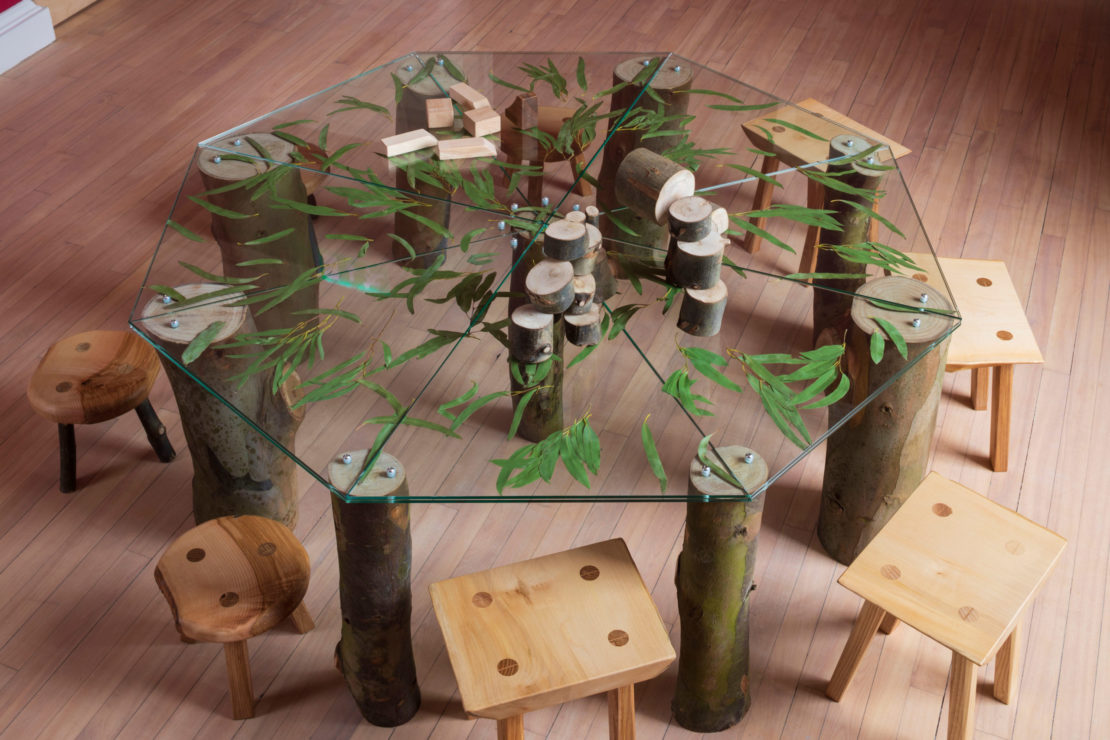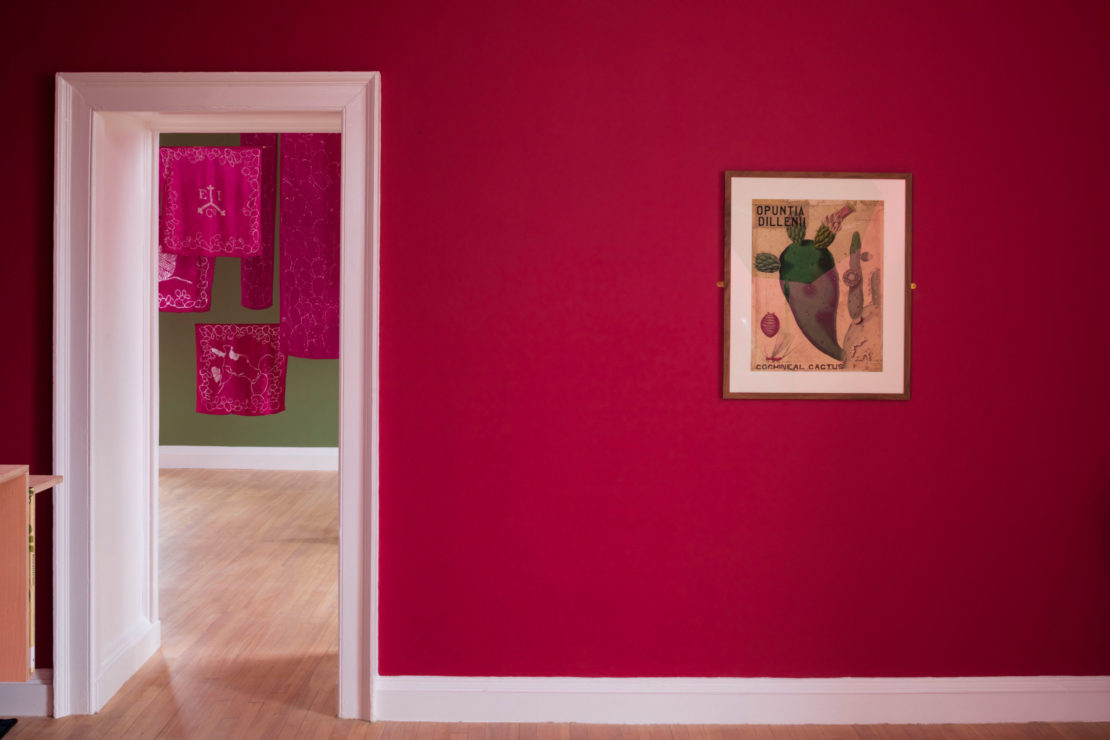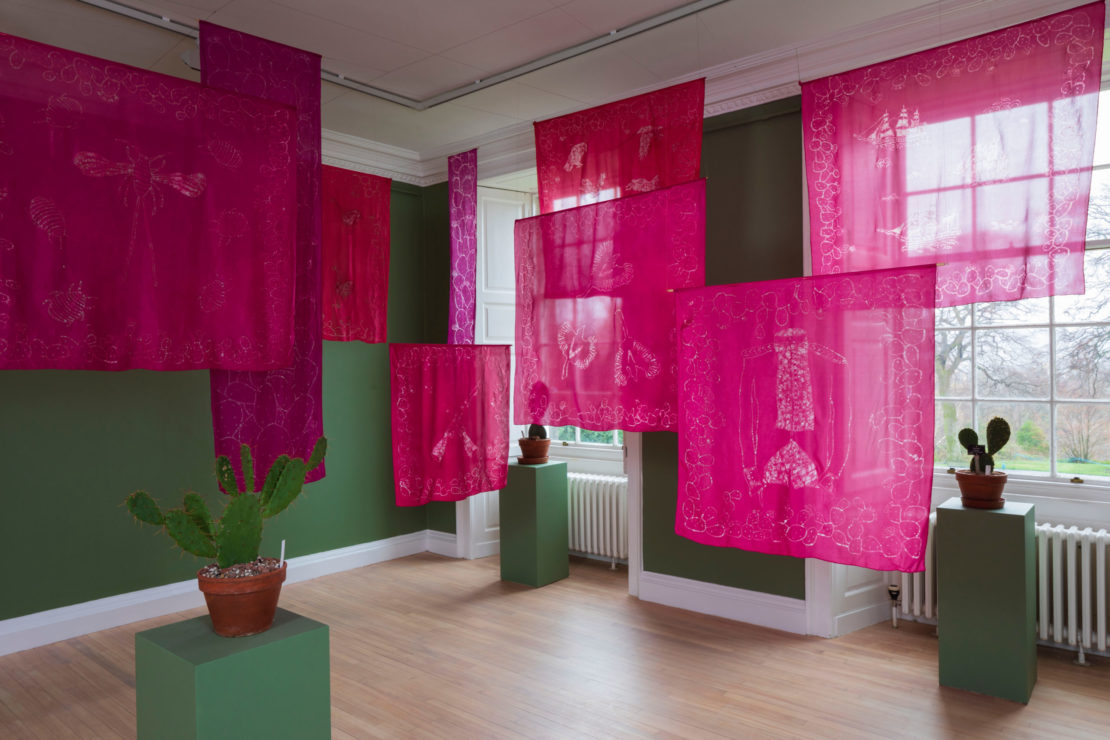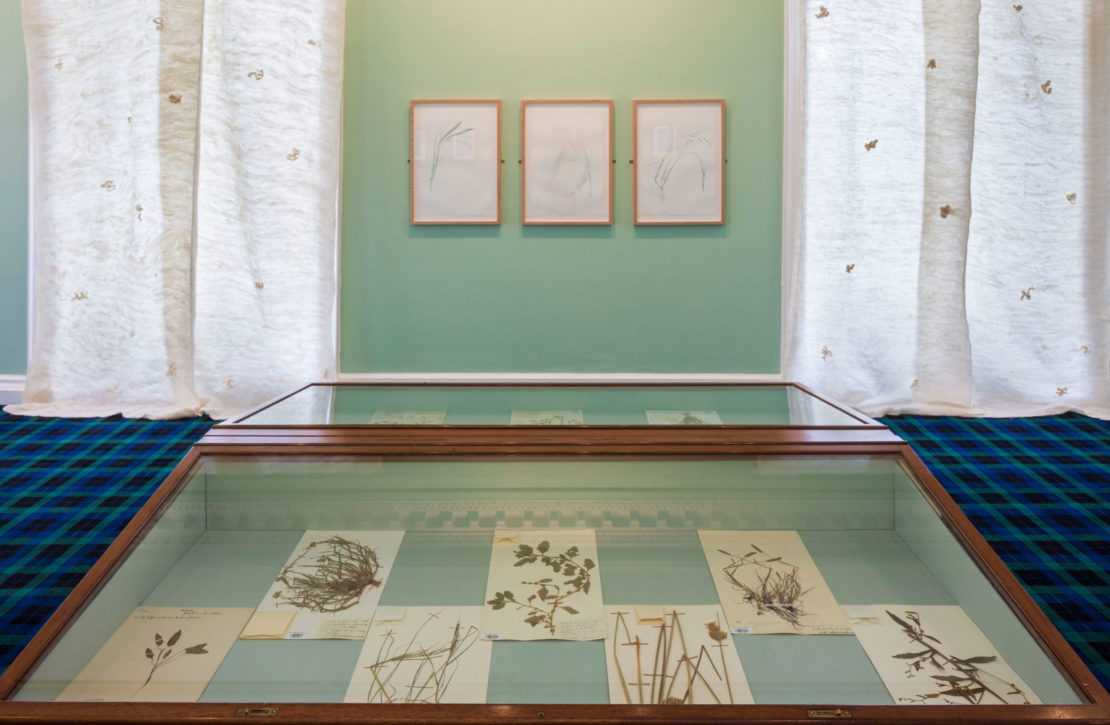Description
Shipping Roots (2023) is a multi-year research project exploring the movement of plants through Empire – including a residency and culminating in a exhibition unfolding over the six galleries of Inverleith House, Royal Botanic Garden Edinburgh (March – August 2023).
Curated by Emma Nicolson.
Comprising of three new installations: Blue Haze, Green Hell and Fleece Fugitives; a custom reading room; a research room and; a space designed specifically with children in mind the exhibition uses a multi-sensory approach combining smell, touch, visuals and audio to open the pedagogy to a wide range of people.
Shipping Roots
And we danced, on the brink of an unknown future,
to an echo from a vanished past.
John Wyndham
The Day of the Triffids (1951)
Plants have always moved over and between land masses, transported both intentionally and inadvertently from their native lands to new ones. This spread of plants has accelerated over the past few hundred years through European colonial expansion, massively altering ecosystems. We now live in a world where the legacy of colonialism on land and landscape through this movement of plants has left lasting impacts, many of which have propelled us towards climate crisis.
Shipping Roots relates stories of plants to my own cultural removal – drawing from my lived experiences as a person of Goan heritage whose ancestral lands were colonised, to living as a settler on unceded Gadigal land in the place known by its colonial name, Sydney. We often hear stories of colonial displacement that focus on people, Shipping Roots shares lesser-known plant stories moving over oceans and lands – pawns in economic expansion trapped in the hulls of ships, tracing colonial legacies through the British Empire – specifically linking Australia, India and the UK and reminds us that the entanglement of plants and people are inextricably tied to understanding Place, and a notion of belonging.
These lesser-known stories of displacement include Blue Haze, the journey of the eucalypt away from its culturally significant context – the Aboriginal land it comes from – at the hands of the British, and spread across the globe, eventually leading to eucalyptus plantations covering a land mass area over 22 million Hectares worldwide, leading to devastating impacts such as lowering water tables and increasing fire risk. This prompts us to ask the question: What happens when these trees are removed from the Aboriginal land they grow on and the Traditional Custodians who care for them?
Green Hell explores the failures of the British to establish a cochineal dye industry within their Empire, for wealth-building – and to dye their Redcoats the colour of blood. Prickly pear carved out scenes of Empire in multifaceted ways. As an early coloniser it arrived on the First Fleet, introduced into Australia as a habitat for the cochineal insect, and used as an agricultural fence to divide up stolen land. It thrived in drought-tolerant conditions, propagated rampantly and rapidly – overtaking the land and overshadowing native species – covering an area larger than the size of the UK only a few decades after its introduction. At the same time in India, the East India Company’s cochineal ventures were a different series of missteps and mishaps – from years of failed attempts to get cochineal insects across the sea to the subcontinent, to eventually introducing the wrong species of the insect and producing a lesser quality dye there was no market for. Their attempts in both locations were a spectacular failure, leaving lasting impacts on the land and landscape.
Fleece Fugitives looks at how the movement and spread of plants has not always been intentional. When the fleece of Australian sheep made their way across the seas the British had originally brought them over on some were carrying native seed hitchhikers, or fugitives, hidden amongst them. The woollen industry in Scotland enabled these seeds to escape through effluent from the mills and the wool waste, ‘wool shoddy’ which had the ‘alien’ seeds hidden within. These seeds propagated around the mills, an effect of industry, and went out to diversify the landscape.
Shipping Roots draws from the Royal Botanic Gardens Edinburgh scientists, collections and archives to trace displacement through the movement of plants, the role botanic gardens have had in this movement and questioning what it means to ‘own’ these vast colonial collections. This includes: rare books; herbaria from countless expeditions that removed and collected flora from across the globe; and botanical illustrations by Indian artists trained in the Mughal miniature tradition and commissioned by Scottish surgeons employed by the East India Company. These items have been placed in conversation with the works to open up thinking behind botany, collections, climate crisis and colonial legacies. Over the seas and across the globe, plants have carved out lasting scenes of empire on lands far from where their journeys began.
Keg de Souza 2023.
Shipping Roots is supported by the Outset Transformative Grant; the Australian Government and the British Council as part of the UK/Australia Season; the Australian Government through the Australia Council, its arts funding and advisory body; the NSW Government through Create NSW; and a City of Parramatta Council Community Grant.

